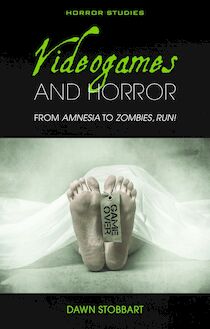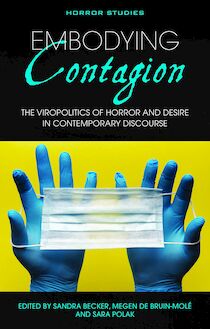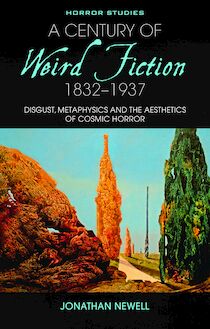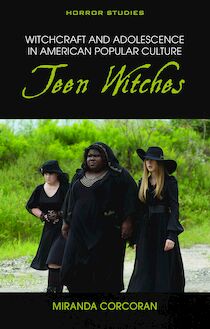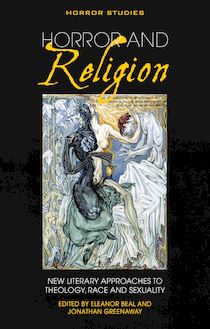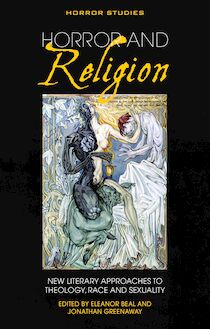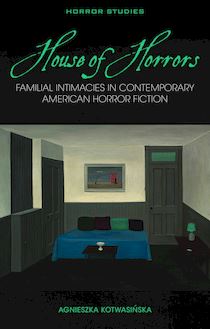-
 Univers
Univers
-
 Ebooks
Ebooks
-
 Livres audio
Livres audio
-
 Presse
Presse
-
 Podcasts
Podcasts
-
 BD
BD
-
 Documents
Documents
-
- Cours
- Révisions
- Ressources pédagogiques
- Sciences de l’éducation
- Manuels scolaires
- Langues
- Travaux de classe
- Annales de BEP
- Etudes supérieures
- Maternelle et primaire
- Fiches de lecture
- Orientation scolaire
- Méthodologie
- Corrigés de devoir
- Annales d’examens et concours
- Annales du bac
- Annales du brevet
- Rapports de stage
La lecture à portée de main
Vous pourrez modifier la taille du texte de cet ouvrage
Découvre YouScribe en t'inscrivant gratuitement
Je m'inscrisDécouvre YouScribe en t'inscrivant gratuitement
Je m'inscrisEn savoir plus
Vous pourrez modifier la taille du texte de cet ouvrage
En savoir plus

Description
Stobbart, D & Evans M; Play, Theory, and Practice: Engaging with Videogames; (2014) Oxford: Inter-Disciplinary Press (Editor and Contributor) (Unknown sales)
Losers Don’t Play Videogames, Heroes do! In The Luminary, Visualizing Fantastika, Summer 2015.
Forthcoming
Mad Max and Disability: Australian Gothic, Colonial and Corporeal (Dis)possession In Studies in Gothic Fiction on Disabled Gothic Bodies
Published
(2016) Telling Tales with Technology: Remediating Folklore and Myth through the Videogame Alan Wake in Jensen, Lucas Examining the Evolution of Gaming and Its Impact on Social, Cultural, and Political Perspectives; Hershey PA: IGI-Global (pp 38-53)
(2017) Still Alive: Understanding Posthuman Femininity in Valve’s Portal Games in Heise-von der Lippe, Anya; Gothic Postmodernism, Cardiff: University of Wales Press.
(2018) Adaptation and New Media: Establishing the Videogame as an Adaptive Medium in Cutchins, Dennis et al, The Routledge Companion to Adaptation Studies, London: Routledge (pp 382-389)
(2018) Playing the Future History of Humanity: Situating Fallout 3 as a Narratological Artefact in Kalla, Irena Barbara et al, On the Fringes of Literature and Digital Media Culture, Leiden: Brill, (pp123 –134).
Everything About Him Was Just Perfect, and I Fell Love Instantly: Life and Love in Welcome to Night Vale in Wienstock, Jeffrey Andrew, Critical Approaches to Welcome to Night Vale: Podcasting Between Weather and the Void, Cham, Switzerland: Palgrave Pivot, (pp 23-34).
Forthcoming
I will abandon this body and take to the air: The Suicide at the Heart of Dear Esther in Hughes, W and Smith, A; Suicide and the Gothic (Forthcoming)
We Are Diamond Dogs: Themes and Memes in Metal Gear Solid V in The Metal Gear Solid Videogame Anthology (forthcoming)
Raymond Briggs: When the Wind Blows in Vanderbeke, Dirk et al; The Handbook of Comics and Graphic Novels (Forthcoming)
Gothic and Gaming in Punter, David; Gothic and the Arts (Forthcoming)
Videogames are full of horrors – and of horror, a facet of the media that has been largely overlooked by the academic community in terms of lengthy studies in the fast-growing field of videogame scholarship. This book engages with the research of prominent scholars across the humanities to explore the presence, role and function of horror in videogames, and in doing so it demonstrates how videogames enter discussion on horror and offer a unique, radical space that horror is particularly suited to fill. The topics covered include the construction of stories in videogames, the role of the monster and, of course, how death is treated as a learning tool and as a facet of horror.
Acknowledgments
Contents
List of Illustrations
Foreword
Introduction: A Light in the Darkness: Videogames and Horror
Chapter 2: Dissecting the Videogame: Genres in the Medium
Chapter 3: Transgressing Boundaries: Adaptation, Intertextuality, and Transmedia
Chapter 4: Play Me a Story: Storytelling in Horror Videogames
Chapter 5: Who Am I?: Identity and Perspective
Chapter 6: The Undead Invade: Monsters in Videogames
Chapter 7: Death and the End: The Final Chapter?
Epilogue
Bibkliography
Filmography
Gameography
Sujets
Informations
| Publié par | University of Wales Press |
| Date de parution | 01 octobre 2019 |
| Nombre de lectures | 0 |
| EAN13 | 9781786834386 |
| Langue | English |
Informations légales : prix de location à la page 0,2850€. Cette information est donnée uniquement à titre indicatif conformément à la législation en vigueur.
Extrait
Videogames
AND HORROR
HORROR STUDIES
Series Editor
Xavier Aldana Reyes, Manchester Metropolitan University
Editorial Board
Stacey Abbott, Roehampton University Harry M. Benshoff, University of North Texas Linnie Blake, Manchester Metropolitan University Fred Botting, Kingston University Steven Bruhm, Western University Steffen Hantke, Sogang University Joan Hawkins, Indiana University Agnieszka Soltysik Monnet, University of Lausanne Bernice M. Murphy, Trinity College Dublin Johnny Walker, Northumbria University
Preface
Horror Studies is the first book series exclusively dedicated to the study of the genre in its various manifestations – from fiction to cinema and television, magazines to comics, and extending to other forms of narrative texts such as video games and music. Horror Studies aims to raise the profile of Horror and to further its academic institutionalisation by providing a publishing home for cutting-edge research. As an exciting new venture within the established Cultural Studies and Literary Criticism programme, Horror Studies will expand the field in innovative and student-friendly ways.
Videogames
AND HORROR
FROM AMNESIA TO ZOMBIES, RUN!
DAWN STOBBART
© Dawn Stobbart, 2019
All rights reserved. No part of this book may be reproduced in any material form (including photocopying or storing it in any medium by electronic means and whether or not transiently or incidentally to some other use of this publication) without the written permission of the copyright owner except in accordance with the provisions of the Copyright, Designs and Patents Act. Applications for the copyright owner’s written permission to reproduce any part of this publication should be addressed to the University of Wales Press, University Registry,
King Edward VII Avenue, Cardiff, CF10 3NS.
www.uwp.co.uk
British Library Cataloguing-in-Publication Data
A catalogue record for this book is available from the British Library.
ISBN 978-1-78683-436-2
eISBN 978-1-78683-438-6
The rights of Dawn Stobbart to be identified as author of this work have been asserted in accordance with sections 77 and 79 of the Copyright, Designs and Patents Act 1988.
The publisher has no responsibility for the persistence or accuracy of URLs for any external or third-party internet websites referred to in this book, and does not guarantee that any content on such websites is, or will remain, accurate or appropriate.
Cover image: marcogarrincha/shutterstock
Contents
Acknowledgements
Illustrations
Foreword
1. Introduction: A Light in the Darkness – Videogames and Horror
Definitions
Immersion and Interactivity
Components of Horror
A Brief History of Horror in Games
Videogame and Horror Scholarship
2. Dissecting the Videogame: Genres in the Medium
Introducing Genre in Videogames
Survival Horror
Lovecraftian Horror
Splatter Horror
Slasher Gaming
Science Fiction Horror
3. Transgressing Boundaries: Adaptation, Intertextuality and Transmedia
Adaptation
Spec Ops : The Line and Intertextuality
Alice is No Longer in Wonderland: Blurring the Line Between Fiction and Real Life
The Multimedia Alien Franchise
Outside Influences on Gaming Narratives
4. Play Me a Story: Storytelling in Horror Videogames
Horror and Narrative Theory
Setting and Landscape in Videogame Storytelling
Environmental Storytelling
Choice
The End of the Story
5. Who Am I? Identity and Perspective
Catharsis Beyond Aristotle
Four Factors on Emotional Play
Perspectives
Third-person Perspective
Second-person Perspective
First-person Perspective
Reactive Storytelling in Zombies, Run!
6. The Undead Invade: Monsters in Videogames
The Videogame Monster
(In)sane Intelligence
The Zombie in Gaming
Less Common Gaming Monsters
Iconic Monsters
Ambiguous Monstrosity
7. Death and the End: The Final Chapter?
Is Death Really the End?
Death and Religion
Permadeath and its Evolution
Narrative Endings in Videogames
Subverting the Traditional Narrative Structure
Playing the Dead and Dealing Death
The Final Word
Epilogue
Notes
Bibliography
Filmography
Gameography
Acknowledgements
I GREW UP PLAYING videogames with my dad. We started out with an XZ Spectrum where I learned to program in BASIC, creating ‘games’ such as Spirograph and playing Jumping Jack (which to my small, chubby fingers was not easy), and from there we moved on to a shiny Commodore 64, with a cassette deck we attached so we could load games. Some of the happiest moments of my childhood were spent playing computer games (especially Trivial Pursuit , remember Liechtenstein Mother?), talking about them with my dad and basking in the warm glow of the screen as we shared a hobby. Long summer evenings were spent playing the Super Nintendo: taking turns and marvelling at the amazing graphics that were, to be fair, a step up from the computer we had begun with. Here I can see the beginning of my love for videogames – a love that has lasted through many technological advances, which I have (just about) managed to keep up with and through all the trials and tribulations a life brings with it – cheers Dad, I am so glad I chose you.
When I was not playing games, I was reading. Sometimes I had three or four books on rotation and my wonderful secondary school teacher Mrs Lishman was a godsend in nurturing this love of the written word: pushing me to be a better reader, a better writer and to understand the words I was reading for more than there might be on the page; without her I would not have even got through high-school English. After school, life got in the way and it took many years for me to return to learning. I am so lucky to have been chosen for an English programme where Dr Stephen Longstaffe was one of the lecturers for my undergraduate degree; his support and passion for literature helped me realize that I wanted to work with English for the rest of my life. Thank you, Steve – you are an inspiration to me.
It is no surprise, then, that my two passions have intermingled along the way. Playing videogames and seeing that the stories in them are as strong and nuanced as those in the books I was reading brought me to my Masters thesis and to my PhD, where Professor Kamilla Elliott took my passion and helped me hone it into something I could articulate. I would like to thank her for her continuous and unwavering support, for her patience, motivation and commitment throughout my PhD and beyond. When I faltered, she was steadfast in my ability. I could not have imagined a better advisor and mentor than you, Kamilla.
Through all of this, I have had at my side the most amazing person, who has supported me financially and emotionally, and put up with my frustrated complaints when I have felt that I am asking too much of myself. Jane, I do not know what I did to deserve you and the love you give me every day, even when playing Mass Effect 1, 2 and 3 , one after the other! You have helped me over every obstacle; you have shown unerring confidence in me and your patience with the grumpy gamer you have chosen to share your life with is something I still cannot understand. Thank you so much. There will never be enough time to repay you for everything you do for me, but I will surely try!
To my children, Lyssa, Nevyn and Anya, who have accommodated me being at a computer for so much of my day, being slightly preoccupied, and for putting up with my slightly eccentric life, you are at the heart of it all. You are a light in my world, and even in the darkest moments you shine for me. My thanks too go to Dianne, one of my best and oldest friends – how you have put up with my complaining and anxious telephone calls about all this is beyond me!
I would also like to thank my colleagues at Lancaster (and beyond). Alan Gregory Fox, Chloe Buckley, Enrique Ajuria Ibarra, Catherine Spooner, Sally Bushell and Rachel Gregory Fox in particular. You all accepted me as a peer, seeing in me something I wasn’t sure was there. You have all widened my mind and my academic ability more than I thought was possible – thank you so much.
My unending thanks go to Dr Ewan Kirkland, who has helped me selflessly with this project, guiding and providing advice that has been invaluable. Thank you so much, Ewan, I owe you one. Equally, to Stephen Curtis, who met a PhD student and saw a kindred spirit. Your advice, proofreading, friendship and academic guidance has been instrumental for my continuing progression. You and Sionadh are some of the best people I know and, from the bottom of my heart, I thank you.
Finally, a special thank you to Dr Xavier Aldana Reyes and Sarah Lewis at the University of Wales Press for trusting in my ability to write this book, when even I was unsure. For me, this really is a dream come true; 16-year-old Dawn would not believe that one day she would write a proper book on something she loves so much.
Illustrations
Figure 1: Victims of white phosphorus in Spec Ops: The Line.
Figure 2: Spec Ops: The Line loading screen.
Figure 3: Resident Evil 7 dinner table scene.
Foreword
– Playing games is good.
– Mm.
Your heart goes faster.
– You smile.
– Yeah. Yeah.
Or, um scream.
Oh! I have always liked to make the player jump.
Frightened.
You get scared, you jump.
– Afterwards, you feel good.
– Yeah.
You glow.
Why? Oh, um Because of the adrenaline rush.
– Yes.
– Yeah.
But mostly because you are still alive.
You have faced your greatest fears in a safe environment.
It is a release of fear.
It liberates you.
( Black Mirror , Season 3, Episode 2) 1
Horror is everywhere: on television, in film, in novels, advertisements and in videogames, the presence of sounds, images and situations that inspire fear and terror in an individual have become an integral part of contemporary society. So too have videogames. Their presence is felt across media: film and television reference gaming, as the above excerpt exemplifies, and the
-
 Univers
Univers
-
 Ebooks
Ebooks
-
 Livres audio
Livres audio
-
 Presse
Presse
-
 Podcasts
Podcasts
-
 BD
BD
-
 Documents
Documents
-
Jeunesse
-
Littérature
-
Ressources professionnelles
-
Santé et bien-être
-
Savoirs
-
Education
-
Loisirs et hobbies
-
Art, musique et cinéma
-
Actualité et débat de société
-
Jeunesse
-
Littérature
-
Ressources professionnelles
-
Santé et bien-être
-
Savoirs
-
Education
-
Loisirs et hobbies
-
Art, musique et cinéma
-
Actualité et débat de société
-
Actualités
-
Lifestyle
-
Presse jeunesse
-
Presse professionnelle
-
Pratique
-
Presse sportive
-
Presse internationale
-
Culture & Médias
-
Action et Aventures
-
Science-fiction et Fantasy
-
Société
-
Jeunesse
-
Littérature
-
Ressources professionnelles
-
Santé et bien-être
-
Savoirs
-
Education
-
Loisirs et hobbies
-
Art, musique et cinéma
-
Actualité et débat de société
- Cours
- Révisions
- Ressources pédagogiques
- Sciences de l’éducation
- Manuels scolaires
- Langues
- Travaux de classe
- Annales de BEP
- Etudes supérieures
- Maternelle et primaire
- Fiches de lecture
- Orientation scolaire
- Méthodologie
- Corrigés de devoir
- Annales d’examens et concours
- Annales du bac
- Annales du brevet
- Rapports de stage


